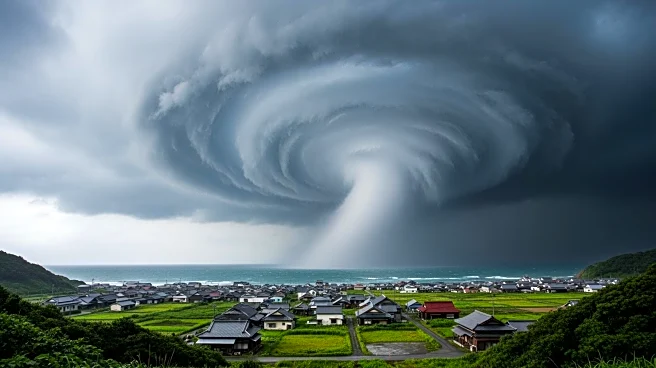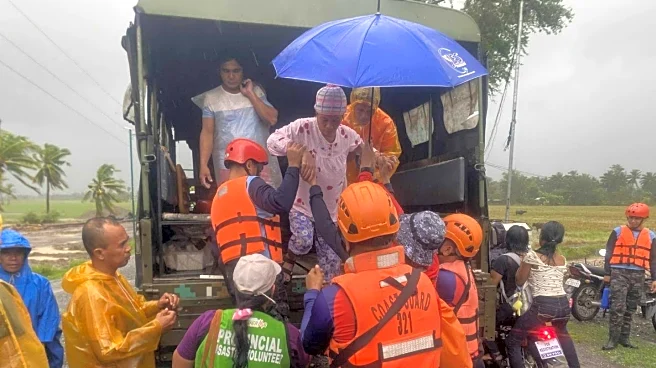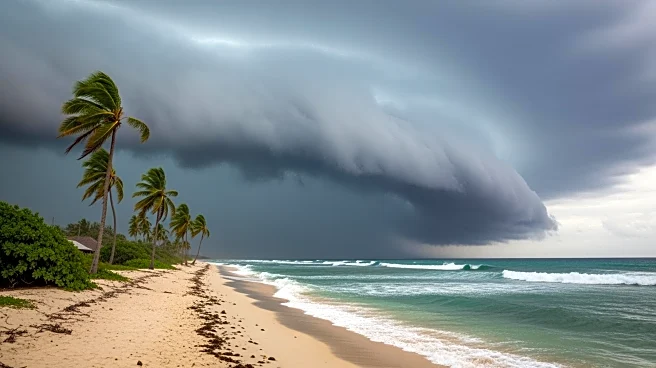What's Happening?
Super Typhoon Fung-wong, locally known as Uwan, made landfall in the northeastern Philippines, marking the country's 21st tropical cyclone this year. The storm has resulted in at least eight fatalities
and forced the evacuation of over a million residents. The typhoon hit northern Luzon, the most populous island group, with its eye passing over Aurora province, located more than 120 miles north of Manila. The Philippine government anticipates that approximately 30 million Filipinos could be affected by the typhoon's hazards. The storm has caused widespread flooding and landslides, leading to the deaths of several individuals, including three children in separate incidents. Emergency workers, already stretched thin from the aftermath of Typhoon Kalmaegi, are actively deployed in the affected areas. President Ferdinand Marcos Jr. had previously declared a one-year state of national calamity following Typhoon Kalmaegi to expedite relief efforts.
Why It's Important?
The impact of Super Typhoon Fung-wong underscores the vulnerability of the Philippines to severe weather events, exacerbated by its geographical location. The typhoon's devastation highlights the urgent need for effective disaster preparedness and response strategies in the region. The mass evacuations and fatalities emphasize the human cost of such natural disasters, affecting millions of lives and disrupting communities. The storm's aftermath will likely strain the country's resources and infrastructure, necessitating international aid and support. The frequency and intensity of these storms may also prompt discussions on climate change and its role in increasing the severity of weather patterns affecting the Philippines.
What's Next?
As the Philippines continues to grapple with the aftermath of Super Typhoon Fung-wong, relief efforts are underway to assist evacuees with essential supplies and health services. The government and emergency services are focused on assessing the full extent of the damage and coordinating rehabilitation efforts. The typhoon's trajectory suggests it may head northwest toward Taiwan, potentially affecting other regions. The ongoing situation may lead to further international aid and collaboration to support recovery efforts. Additionally, the government may review and enhance its disaster preparedness and response strategies to better handle future events.
Beyond the Headlines
The repeated occurrence of severe typhoons in the Philippines raises broader questions about climate resilience and adaptation strategies. The country's experience with these natural disasters may influence global discussions on climate change mitigation and the need for sustainable development practices. The cultural and social impacts of such events are profound, affecting community cohesion and long-term recovery. The situation also highlights ethical considerations regarding the equitable distribution of aid and resources to affected populations.












